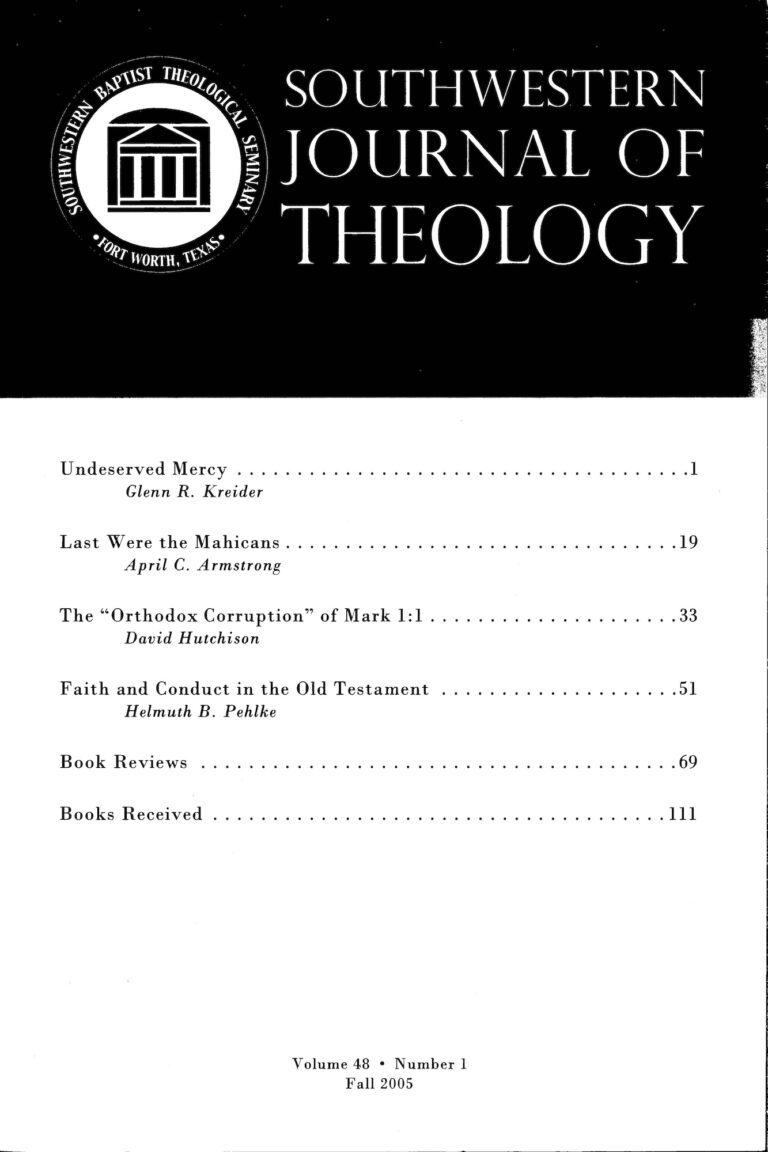
Southwestern Journal of Theology (48.1)
Southwestern Journal of Theology
Volume 48, No. 1 - Fall 2005
Editor: Paige Patterson
By Albert M. Wolters. Postscript coauthored by Michael W. Goheen. Second Edition. Grand Rapids: Eerdmans, 2005. xii + 143 pages. Softcover, $12.00.
When Albert Wolters first released his book Creation Regained in 1985, the topic of “worldview” had hardly been introduced to the Christian community. Since that time, both the academy and the church have begun to discover the importance of worldview formation. While more than twenty years have passed since its original publication, Creation Regained (now in its second edition) remains an indispensable resource for anyone interested in the makings of a biblical worldview.
In Creation Regained, Wolters introduces the concept of a biblical worldview using the tripartite framework of creation, fall, and redemption. He devotes the first chapter to an introductory discussion of worldview, covers the three worldview pillars (creation, fall, redemption) in the second, third, and fourth chapters, respectively, and concludes the book with a final chapter on how a biblical worldview might be applied on societal and personal levels. In this second edition, Wolters (with Michael Goheen) includes a 25-page postscript entitled “Worldview between Story and Mission.” This section has been added in order to illustrate how the book’s reformational worldview does in fact coincide with “the narrative character of Scripture” and “the importance of mission” (120).
Wolters succeeds in providing a succinct, yet thoroughly helpful explanation of the role of worldview in Christian thought and practice. His explanation of a biblical worldview in terms of creation, fall, and redemption offers a simple paradigm by which Christians can understand the entirety of God’s word and work in the world. In fact, it is the succinctness and simplicity of Wolters’s project that makes it so valuable to the broader Christian community. For, while Wolters originally intended the book as “an introduction to the philosophy of D. H. T. Vol-lenhoven and H. Dooyeweerd” (119), Creation Regained can be used as a tool in a variety of contexts. First, in the academy this book could serve as an excellent resource in an introduction to philosophy, theology, or hermeneutics. With the second edition’s brief connection between worldview and missions, it would even be an appropriate tool for a course in missiology. Second, Wolters’s book could be used in a local church context as a guide for small group discussions or as a study in youth or college groups. Third, it may also have a place in the home as a didactic tool for parents with their teenage children.
Regardless of the context in which the book is employed, Wolters’s concise exposition of a biblical worldview, his unrelenting attack on the compartmentalization of sacred and secular realms, and his vision of the rule of Christ over the totality of life need to be heard by the church today. I strongly recommend this book.





